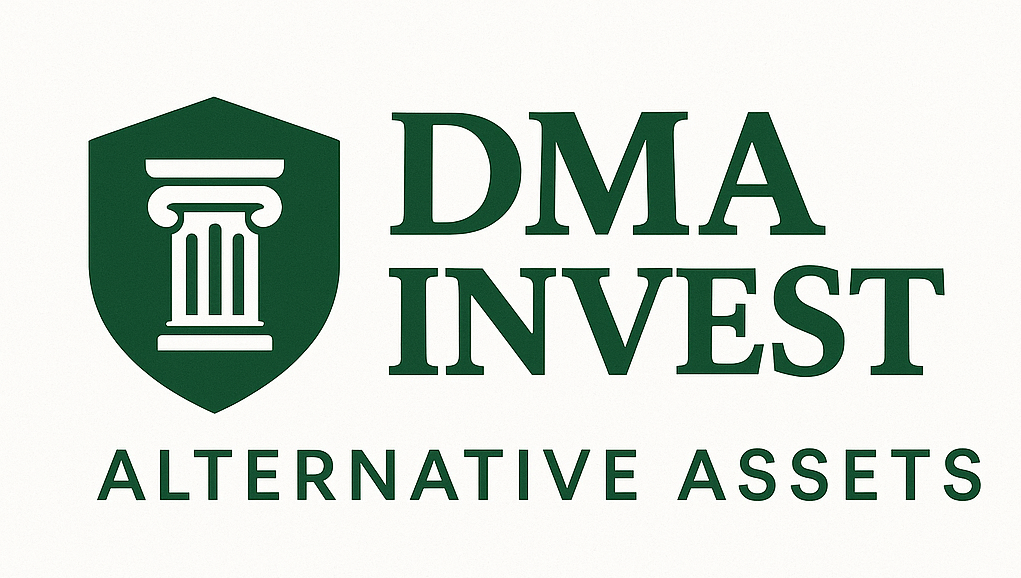Real Estate: Commercial properties, residential developments, warehouses
what are the trends in commercial properties, deep dive evaluation about the global markets datas, russian markets datas and specific Saint-Petersburg datas

Global & Russian Real Estate Markets for Commercial, Residential and Warehouses
Global Market Trends (2020-2024):
Commercial Properties (Office/Retail):
Russian Real Estate Market Overview (2020-2024):
Commercial Properties:
Saint Petersburg's real estate market exhibits unique dynamics within Russia:
Residential: The engine of the market. Demand consistently exceeds Moscow's relative to supply, fueled by:
Overall Opinion on Saint Petersburg:
Saint Petersburg's real estate market is characterized by extreme divergence. The residential sector, supercharged by state subsidies, remains hot but increasingly fragile and artificial. Commercial property is deeply depressed, facing a long road to recovery without major geopolitical shifts. Warehousing offers the clearest fundamentals-driven opportunity.
Real Estate as an Asset Class vs. Other Alternatives: Global & Russian Context
Compared to PRIVATE EQUITY (PE) / VENTURE CAPITAL (VC):
Pluses of Real Estate:
Pluses of Real Estate:
Pluses of Real Estate:
Pluses of Real Estate:
Global Market Trends (2020-2024):
Commercial Properties (Office/Retail):
- Trends: Accelerated shift towards "flight to quality" in offices post-pandemic. Demand concentrates on ESG-compliant, flexible, amenity-rich Class A assets, while secondary stock struggles. Vacancy rates remain elevated globally (e.g., US avg. ~18% Q1 2024, EU major cities ~8-12%). Retail bifurcates: experiential & necessity-based anchors thrive; traditional malls face pressure. Hybrid work persists, impacting utilization on offices and business centers in big and mid size cities.
- Growth: Global office investment volumes down significantly (2024: ~ -35% YoY). Prime office yields softened. Rents largely stagnant or slightly negative growth globally (2023: -0.5% to +1% YoY avg. for prime offices).
- Trends: Persistent undersupply in major global markets fuels affordability crises. High interest rates (2022-2024) cooled some frenzied markets, leading to price corrections (5-15% peak-to-trough in some areas). Demand remains robust for well-located, affordable/mid-market segments. Build-to-Rent (BTR) sector experiences explosive growth in US/UK/EU.
- Growth: Global residential price growth slowed sharply. Pre-rate hike (2021): Many markets saw +10-20% YoY. Post-hike (2023): Avg. growth ~1-4% YoY in resilient markets (e.g., parts of EU), slight declines (-2% to -5%) in others (e.g., Germany, Sweden). Rental growth remained strong (2023: +5-10% YoY avg. in major cities) due to supply constraints.
- Trends: E-commerce growth (even post-pandemic normalization) and supply chain restructuring drive relentless demand. Focus on modern, high-spec (high ceilings, automation-ready, sustainable) facilities near major population/transport hubs. Last-mile logistics is critical. Rising construction costs and land scarcity are challenges.
- Growth: The standout performer globally. EU prime logistics rents +35-50% since 2020 (2023: ~+10% YoY). Vacancy rates remain near record lows (US: ~4%, EU: ~3-5%). Investment volumes peaked in 2021/22 but remained relatively resilient (-15% YoY in 2023 vs. steeper drops in other sectors). Yields compressed significantly pre-2022, now stabilizing/softening slightly.
Russian Real Estate Market Overview (2020-2024):
Commercial Properties:
- Trends: Post-2022: Mass exodus of international tenants & investors. Significant oversupply in Moscow/St. Petersburg Class A offices. Vacancy rates soared (Moscow: 20%+ in 2023). Domestic companies and "friendly" country firms became primary tenants. Retail heavily impacted by brand exits, but domestic chains and F&B partially filled vacancies, very few new projects but rental rates are following inflations and grow at least 10% year for the last 3 years, depending on the city and geography.
- Growth: Investment collapsed. Prime office rents in Moscow declined 25-40% from peak (2021) by end-2023. Retail rents also down significantly. Yield expansion 300-500+ bps. Data reliability decreased post-2022, the lack of free premises highline the fact that the new investments slow down created a situation of scarcity and prices for existing spaces grown.
- Trends: The most active sector. Government support became critical: Preferential mortgage programs (initially 0.5%, then 8% for new builds, later revised) fueled massive demand despite economic headwinds. Significant price inflation occurred (2021: ~20%+ YoY, 2022: ~25-35% YoY in major cities). Construction shifted heavily towards state-subsidized projects. "Self-sufficiency" in materials became a focus.
- Growth: Primary market prices surged: Moscow (2021: +22% YoY, 2022: +30% YoY, 2023: +15-20% YoY,2024: +10-15% YoY). St. Petersburg followed similar, sometimes higher, trends. Pre-sale volumes remained high due to preferential mortgages. Secondary market showed more volatility but generally strong growth.
- Trends: Initially disrupted by sanctions and logistics chaos. Rapid adaptation followed: Surge in demand for storage (import substitution, parallel imports, inventory hoarding). Significant reconfiguration of logistics flows (East/South, domestic production). Development continued, driven by domestic developers/investors. Focus on regions near new trade corridors and major consumption hubs.
- Growth: Rental growth remained robust, arguably the strongest CRE sector post-2022. Moscow region prime rents increased ~15-20% in RUB terms during 2022, followed by ~10-15% in 2023. Vacancy rates stayed low (<5% in key markets). Take-up remained strong. Yields softened but less dramatically than offices/retail.
Saint Petersburg's real estate market exhibits unique dynamics within Russia:
Residential: The engine of the market. Demand consistently exceeds Moscow's relative to supply, fueled by:
- Strong in-migration (domestic and CIS).
- Significant state employee presence reliant on housing programs.
- Continued, albeit constrained, appeal as Russia's "European" cultural capital.
- Outlook: Preferential mortgages will continue driving primary market activity and price growth (likely 10-15% YoY in RUB terms in 2025). However, risks are mounting: Affordability is stretched, mortgage rates remain high, and the sheer volume of state-subsidized projects risks long-term oversupply and quality concerns. Secondary market may see more correction.
- Outlook: Continued stagnation in the medium term. Selective opportunities may exist in repurposing or acquiring well-located Class B/C assets at steep discounts for conversion or long-term hold, but liquidity is very low.
- Positioned as a key Baltic logistics hub (though rerouted). Significant port infrastructure.
- Demand remains healthy for modern storage supporting import substitution, domestic manufacturing, and serving the large local population.
- Development continues, though focused on functional rather than premium specs.
- Outlook: The most resilient sector. Expect continued steady demand and moderate rental growth (5-10% YoY RUB), outperforming commercial. Locations with access to port/rail and major highways are preferred.
Overall Opinion on Saint Petersburg:
Saint Petersburg's real estate market is characterized by extreme divergence. The residential sector, supercharged by state subsidies, remains hot but increasingly fragile and artificial. Commercial property is deeply depressed, facing a long road to recovery without major geopolitical shifts. Warehousing offers the clearest fundamentals-driven opportunity.
- Opportunity (High Risk): Residential development leveraging state programs offers cash flow but requires navigating bureaucracy and subsidy dependence. Value-add plays in converting obsolete office/retail to residential (where feasible) or acquiring warehouses at reasonable yields exist but demand deep local expertise and tolerance for illiquidity and political risk.
- Risk: The market is highly sensitive to changes in government subsidy policies (especially mortgages), macroeconomic instability (inflation, currency), and further geopolitical escalation. Exit strategies for non-residential assets are severely limited. Data transparency has decreased.
Real Estate as an Asset Class vs. Other Alternatives: Global & Russian Context
Compared to PRIVATE EQUITY (PE) / VENTURE CAPITAL (VC):
Pluses of Real Estate:
- Tangible Underlying Asset: Direct ownership of physical property provides inherent collateral value and a degree of inflation hedging. PE/VC invests in business models/intangibles, carrying higher business model risk.
- Predictable Income Stream (Core/Core+): Stabilized commercial/residential properties (especially with long leases) and warehouses offer regular rental income (yield). PE/VC returns are typically back-ended, reliant on exit events (IPO, sale), creating J-curve effects and cash flow uncertainty.
- Lower Volatility (Generally): While values fluctuate, prime real estate tends to exhibit less short-term price volatility than early-stage VC or highly leveraged PE deals. Value is tied to physical asset and lease income.
- Broader Market Understanding: Real estate fundamentals (location, supply/demand, rents) are often more accessible than deep tech or niche business models in PE/VC.
- Lower Absolute Return Potential (Core): Prime stabilized assets typically offer lower long-term return potential than successful VC investments or high-growth PE buyouts. Value-add/opportunistic real estate can compete but carries higher risk.
- Illiquidity: Direct real estate is highly illiquid. Exiting requires finding a buyer for a specific asset, taking months or years. PE/VC funds also have lock-ups, but secondaries markets are more developed than for single property assets.
- High Transaction Costs & Management Intensity: Acquisition, disposal, and ongoing management (leasing, maintenance) costs are significant. Requires specialized operational expertise. PE/VC involves management fees/carried interest but less direct operational hassle per asset.
- Capital Intensity: Acquiring significant real estate assets requires large upfront capital. PE/VC allows diversification across multiple companies with smaller minimums via funds.
Pluses of Real Estate:
- Income Generation: Real estate produces regular cash flow (rent). Commodities are purely speculative assets (price appreciation only) or involve complex futures strategies; they generate no yield.
- Intrinsic Utility Value: Property provides usable space (housing, work, storage). Commodities derive value from scarcity and industrial use/hedging, but lack direct utility for the holder.
- Lower Pure Speculative Volatility: While volatile, real estate prices are anchored by replacement cost, rental income, and specific location dynamics. Commodities can experience extreme short-term volatility driven by macro events, geopolitics, and speculation.
- Inflation Hedge (Operational): Real estate can provide a direct hedge via rent escalations (often CPI-linked) and property value increases linked to replacement cost inflation. Commodities are a financial hedge but require constant rebalancing and offer no income.
- Extremely Low Liquidity (Direct): Trading physical commodities is impractical for most investors (futures are used). Direct real estate is similarly illiquid. However, listed REITs/commodity ETFs offer liquidity, but these are proxies, not direct ownership.
- Idiosyncratic Risk: Each property has unique risks (tenant default, structural issues, location decline). Commodity prices are driven by global supply/demand; an ounce of gold is fungible globally.
- Storage/Carrying Costs: Real estate incurs property taxes, insurance, maintenance. Commodities involve storage fees (for physical) or roll costs (for futures).
- Geographic Constraint: Real estate value is hyper-local. Commodities are global assets.
Pluses of Real Estate:
- Broader Opportunity Set & Shorter Horizon: More diverse assets and locations are available. Development/value-add cycles can be shorter (3-7 years) than massive greenfield infrastructure projects (10-20+ years).
- Potentially Higher Yield (Value-Add/Opportunistic): Core infrastructure offers very stable, low yields (often inflation-linked). Core real estate yields are comparable, but value-add/development real estate offers higher return potential (with higher risk).
- Less Regulatory/Concession Risk: While real estate has zoning/permitting, core infrastructure is often subject to intense, long-term regulation, price caps, and political interference (renewable subsidies, toll road concessions).
- Easier Entry/Exit (Relatively): The market for buying/selling individual buildings is more established than for single infrastructure assets like airports or transmission networks.
- Lower Monopoly Power / Essentiality: Core infrastructure often has natural monopoly characteristics and provides essential services (water, power, transit), leading to incredibly stable, recession-resistant cash flows. Real estate demand is more cyclical and faces competition.
- Higher Tenant Turnover Risk: Infrastructure assets often have single, creditworthy counterparties (governments, utilities) on very long-term contracts (PPAs, concessions). Real estate has multiple tenants with shorter leases and higher turnover risk.
- Less Predictable Inflation Linkage: While leases can have escalations, infrastructure concessions often have explicit, formulaic CPI linkage built into contracts.
Pluses of Real Estate:
- Income Generation: Real estate produces rent. Collectibles produce no income (unless leased, which is niche and risky).
- Objectively Verifiable Value: Property value can be appraised based on income, comparables, and replacement cost. Collectible valuation is highly subjective, driven by trends, provenance, and expert opinion.
- Lower "Passion Asset" Risk: Real estate investment can be purely financial. Collectibles require deep expertise and carry the risk of investing based on personal passion rather than fundamentals.
- More Established Financing: Mortgages are widely available for real estate. Financing collectibles is niche and expensive.
- Higher Ongoing Costs: Property taxes, insurance, maintenance are substantial. Collectibles have insurance and storage costs, but typically lower.
- Correlation to Broader Economy: Real estate is significantly impacted by economic cycles (employment, interest rates). High-end collectibles can be more resilient or even counter-cyclical for the ultra-wealthy.
- Extremely Low Liquidity (Niche Collectibles): While illiquid, major real estate assets are generally easier to sell than a unique piece of art or a rare car, which requires finding a very specific buyer.
- Portability: Collectibles are portable; real estate is fundamentally location-bound.
- Heightened Illiquidity & Idiosyncratic Risk: The Russian market, especially post-2022, exemplifies the extreme illiquidity and hyper-local/idiosyncratic risks of direct real estate. Exit options for commercial assets are severely limited. This contrasts sharply with the theoretical global fungibility of commodities or gold as a "safe haven."
- Income vs. Growth Dichotomy: Russian residential development (driven by state subsidies) offers high development returns but carries immense policy risk and questionable long-term sustainability – resembling a high-risk PE play more than stable core real estate. Warehouses offer more reliable, fundamentals-driven income, akin to core infrastructure but with less monopoly protection.
- Geopolitical Risk Magnifier: Real estate's fixed location makes it uniquely vulnerable to geopolitical shifts – a stark disadvantage compared to the (relative) portability of art/gold or the global nature of commodities. Saint Petersburg's "European" cachet became a liability post-2022. This risk dwarfs the regulatory risk seen in core infrastructure.
- Inflation Hedge? (Russian Context): While real estate can hedge inflation via RUB-denominated rents and values, rampant Russian inflation (2022: ~12%, 2023: ~7.4%, 2024: ~8.44%) and currency volatility (RUB fluctuations) severely undermine this benefit. Hard commodities (if accessible) or foreign assets are preferred inflation hedges, but sanctions block access for many.
- Warehouses: The "Commodity-Like" Play: Within Russian real estate, warehouses function somewhat like an industrial commodity play – driven by fundamental supply/demand for storage and logistics capacity due to import substitution/parallel imports. They offer income and scarcity value, making them arguably the most compelling relative real estate play in Russia/St. Petersburg currently, though still highly risky.
Ready to Invest in Real Estate Project?
Contact us today to unlock the full potential of your capital
Contact us today to unlock the full potential of your capital
Contacts
Tel: +79052255567
email: info@dma-invest.com
Address: St. Petersburg, 191123, Zakharyevskaya st., 25 letter A, premises. 21-n, office 508
email: info@dma-invest.com
Address: St. Petersburg, 191123, Zakharyevskaya st., 25 letter A, premises. 21-n, office 508
About the company
Services
Contacts
OOO "DMA INVEST"
St. Petersburg, 191123, Zakharyevskaya st., 25 letter A, premises. 21-n, office 508
Russian Federation
Tel: +79052255567
email: info@dma-invest.com
St. Petersburg, 191123, Zakharyevskaya st., 25 letter A, premises. 21-n, office 508
Russian Federation
Tel: +79052255567
email: info@dma-invest.com

